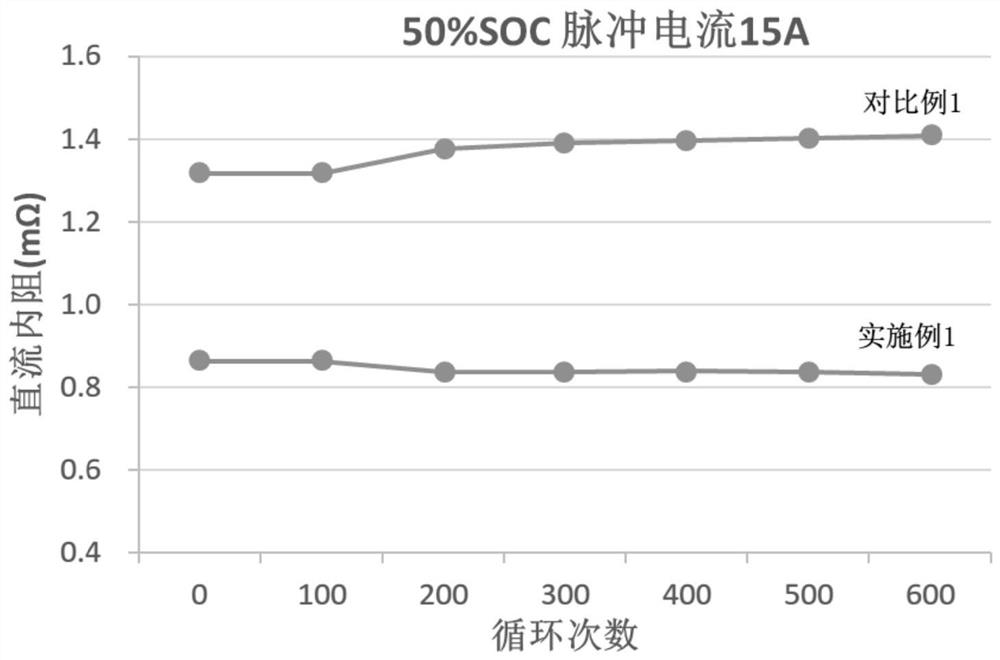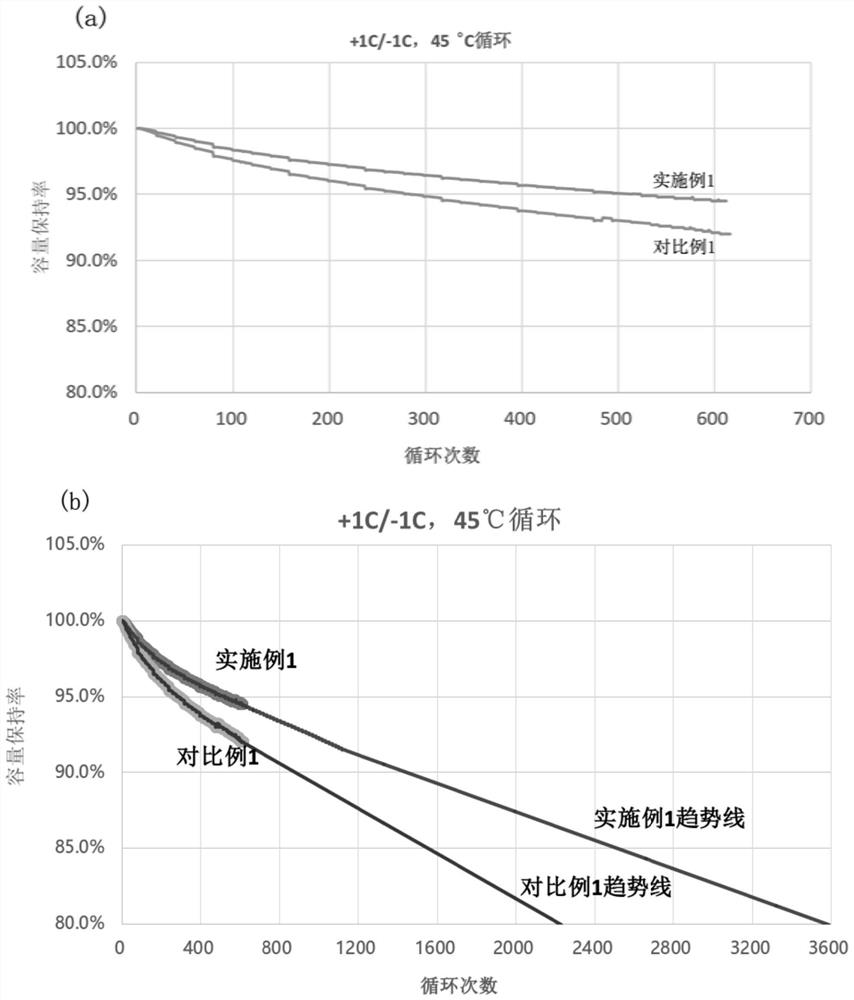Electrolyte and application thereof
An electrolyte and lithium-ion battery technology, which is applied in composite electrolytes, circuits, electrical components, etc., can solve problems such as electrolyte needs to be improved, lithium-ion battery capacity decline, and battery hazards
- Summary
- Abstract
- Description
- Claims
- Application Information
AI Technical Summary
Problems solved by technology
Method used
Image
Examples
Embodiment 1
[0039] The total mass of the electrolyte is recorded as 100%, and the components of the electrolyte are weighed according to the following mass percentages:
[0040] EC: 24.5%;
[0041] PC: 4.5%;
[0042] PP: 4.5%;
[0043] DEC: 47.5%;
[0044] LiC(SO 2 CF 3 ) 3 : 8.7%;
[0045] LiODFB: 2.9%;
[0046] LiPF 6 : 2.9%;
[0047] Additives 4.5% (including DTD, 1,3-PS, VC, FPMS).
Embodiment 2
[0076] The electrolytes in Example 1 and Comparative Examples 1-3 were respectively taken, and the type of the electrolyte was used as a single variable to make batteries and conduct tests. The specific method of making the battery is as follows:
[0077] (1) Preparation of positive pole piece
[0078] Nickel cobalt lithium manganese oxide (NCM811) is selected as the active material of the positive electrode, and the ratio of nickel cobalt lithium manganese oxide (NCM811), binder polyvinylidene fluoride (PVDF), and conductive agent (LITX300) in the positive electrode slurry formula is 94.5:2 : 3.5, three kinds of materials are put into 50L stirring kettle in proportion and stir evenly, then add N-methylpyrrolidone (NMP) to prepare positive electrode slurry, control slurry solid content at 64% ± 2%. When the viscosity range of the slurry is 5000±1000 centipoise and the fineness is between 10 and 30 μm, the material is discharged, the slurry is coated on an aluminum foil with a t...
PUM
| Property | Measurement | Unit |
|---|---|---|
| thickness | aaaaa | aaaaa |
Abstract
Description
Claims
Application Information
 Login to View More
Login to View More - Generate Ideas
- Intellectual Property
- Life Sciences
- Materials
- Tech Scout
- Unparalleled Data Quality
- Higher Quality Content
- 60% Fewer Hallucinations
Browse by: Latest US Patents, China's latest patents, Technical Efficacy Thesaurus, Application Domain, Technology Topic, Popular Technical Reports.
© 2025 PatSnap. All rights reserved.Legal|Privacy policy|Modern Slavery Act Transparency Statement|Sitemap|About US| Contact US: help@patsnap.com



